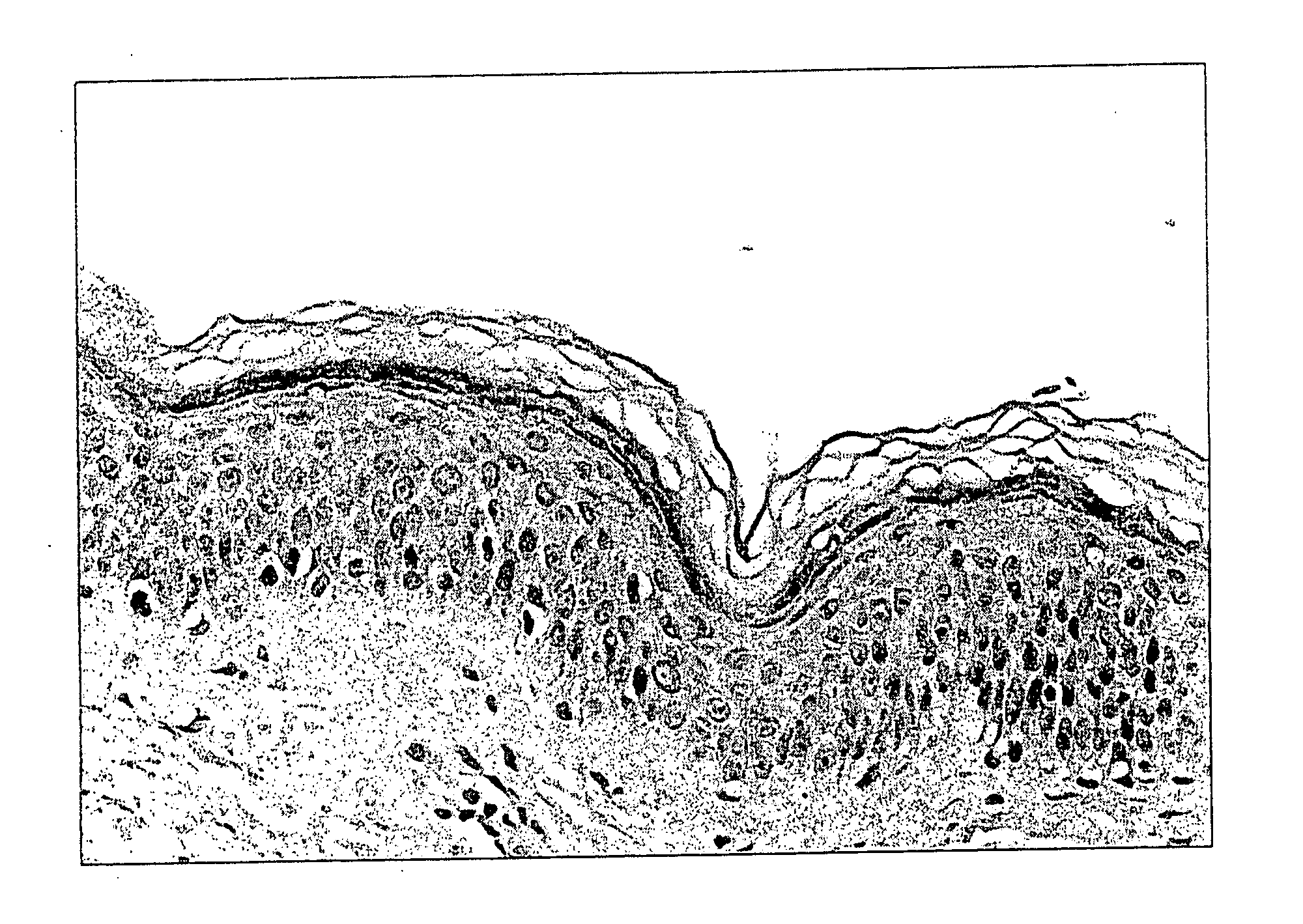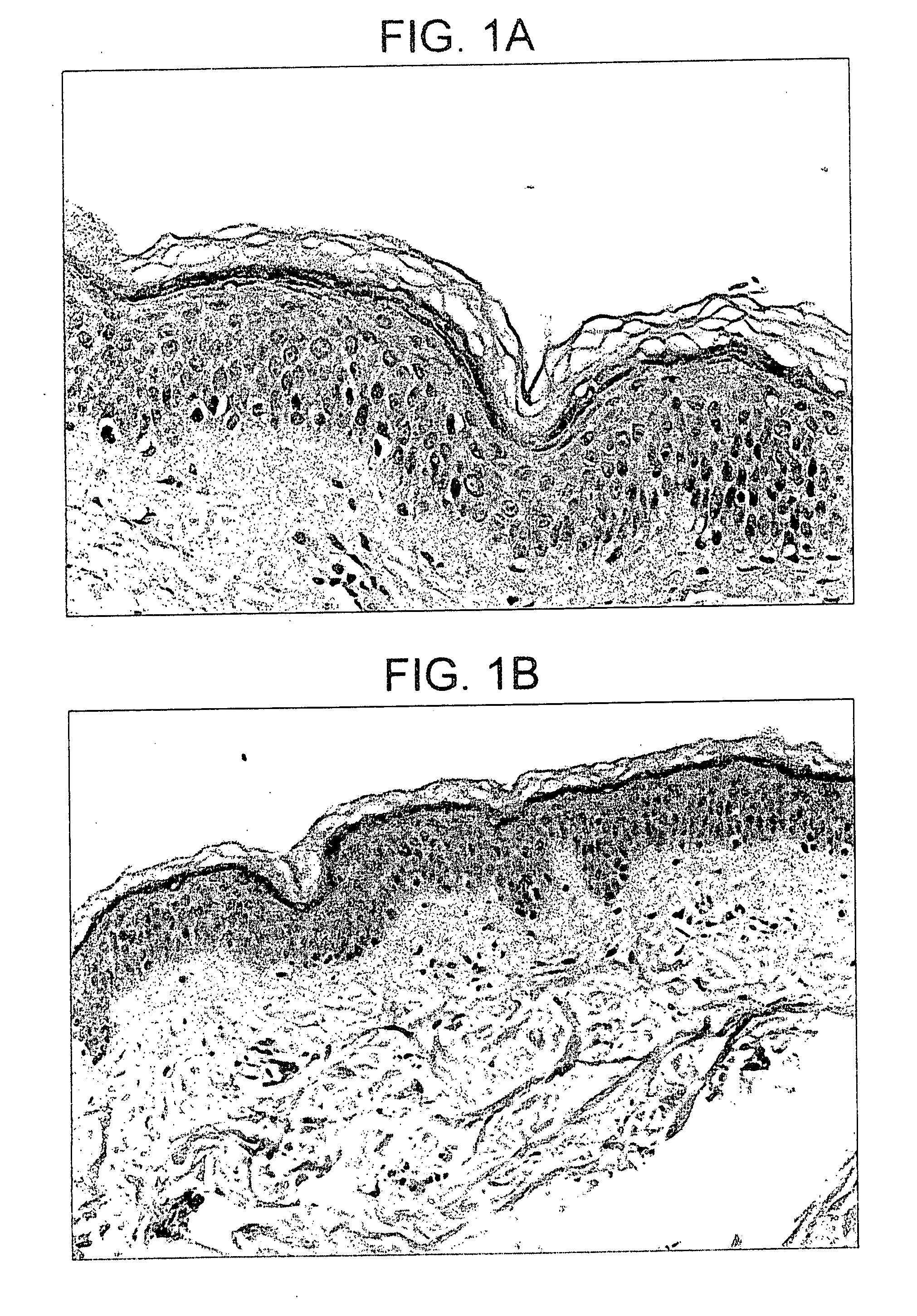Use of penetration enhancers and barrier disruption methods to enhance the immune response of an antigen
a technology of penetration enhancers and barrier disruption, applied in the field of transcutaneous immunization, can solve the problems of inconsistent conclusions, similar redness and swelling, undesirable reaction, etc., and achieve the effect of enhancing immunization and/or vaccination
- Summary
- Abstract
- Description
- Claims
- Application Information
AI Technical Summary
Benefits of technology
Problems solved by technology
Method used
Image
Examples
example 1
[0116]Swabbing the skin with a treated or untreated swab is thought to physically and chemically remove a small portion of the stratum corneum and thus enhance skin penetration. Swabs can be made of materials such as, for example, cotton, nylon, rayon and polyethylene. Alcohol swabbing is thought to remove a small portion of the stratum corneum and acts both as a physical means and chemical means of penetration enhancement. In the example above, the enhancement of the immune response to transcutaneous immunization can be seen with this penetration enhancement method. BALB / c mice 6 to 8 weeks of age were anesthetized and shaved as described in the “immunization procedure”. Twenty four hours later, the backs of the animals were either wiped with a gauze pad saturated in water “water” or wiped for approximately 10 seconds with an alcohol prep pad containing 70% isopropyl alcohol “isopropanol”. The alcohol was allowed to evaporate for approximately 5 minutes. The excess water was remove...
example 2
[0118]To assess whether chemical penetration enhancement alone might augment transcutaneous immunization a detergent was used on the skin. BALB / c mice 6 to 8 weeks of age were anesthetized and shaved as described in the “immunization procedure.” Twenty-four hours later, the backs of the “water” group were wiped with a gauze pad saturated in water and a pool of water was placed on the back. Approximately 5 minutes later, any excess water was removed and 25 μg of CT (50 μl of a 0.5 mg / ml solution) was applied to the back. Alternatively, 24 hours after shaving, the backs of the “5% SDS” group were treated by dripping 300 μl of 5% SDS (Sodium Dodecyl Sulfate—a 1 to 1 mixture of deionized water and commercial stock of 10% SDS), a detergent, for approximately 12 minutes followed by blotting off any excess SDS with a dry gauze pad. SDS can be applied to the skin in a carrier such as, for example, a pad and then any excess SDS can be removed with a dry gauze pad. Thereafter the animals were...
example 3
[0120]Another form of chemical penetration enhancement, a depilatory (such as, for example, calcium hydroxide or the like) is widely used in dermatologic experiments and was shown to enhance transcutaneous immunization. BALB / c mice 6 to 8 weeks of age were anesthetized and shaved as described in the “immunization procedure.” Twenty-four hours later, the backs of the “water” group were wiped with a gauze pad saturated in water and a pool of water was placed on the back. Approximately 5 minutes later, any excess water was removed and 25 μg of CT (50 μl of a 0.5 mg / ml solution) was applied to the back. Alternatively, twenty-four hours after shaving, the backs of the “Nair©” group were treated with 100 μl of Nair© cream for approximately 12 minutes followed by wiping off of the formulation with a gauze pad saturated in water. Such treatment can continue for from about 0.1 to 30 minutes preferably about 20 minutes and more preferably about 12 minutes. Thereafter the animals were hydrated...
PUM
 Login to View More
Login to View More Abstract
Description
Claims
Application Information
 Login to View More
Login to View More - R&D
- Intellectual Property
- Life Sciences
- Materials
- Tech Scout
- Unparalleled Data Quality
- Higher Quality Content
- 60% Fewer Hallucinations
Browse by: Latest US Patents, China's latest patents, Technical Efficacy Thesaurus, Application Domain, Technology Topic, Popular Technical Reports.
© 2025 PatSnap. All rights reserved.Legal|Privacy policy|Modern Slavery Act Transparency Statement|Sitemap|About US| Contact US: help@patsnap.com



